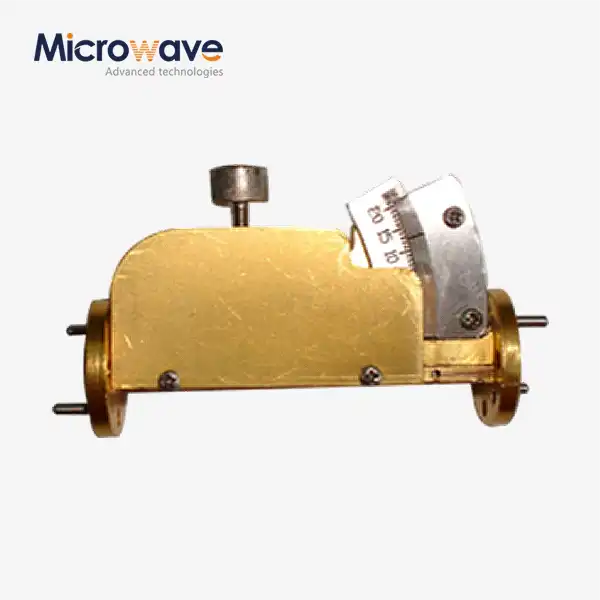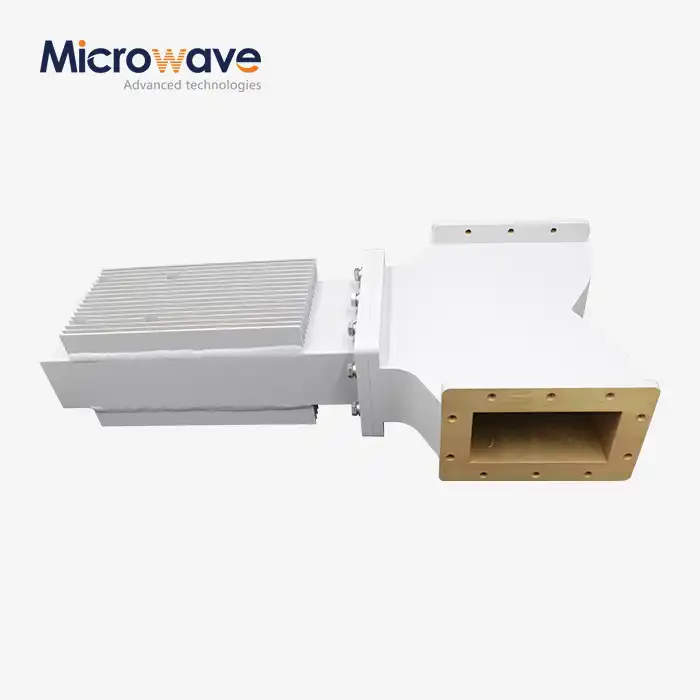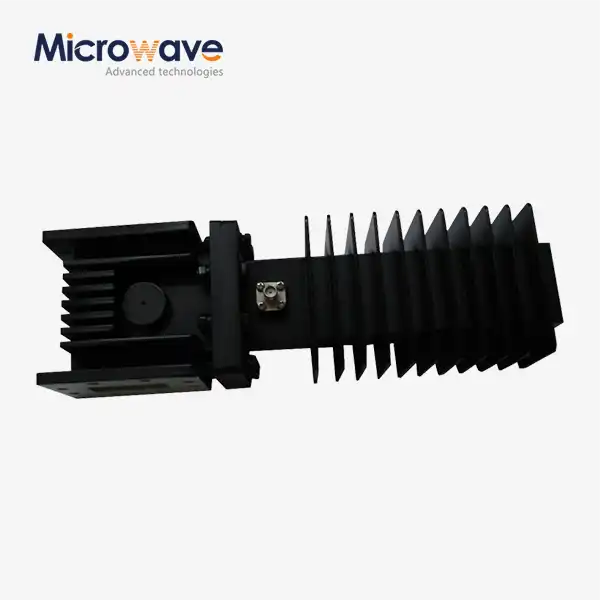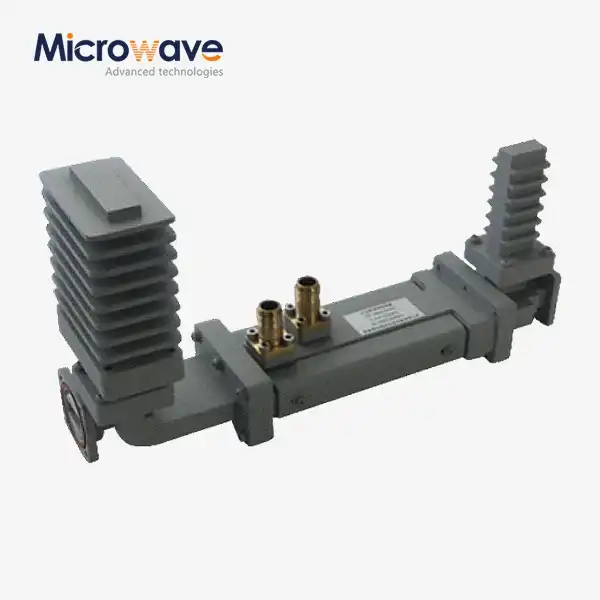Engineered Efficiency: Rectangular Straight Waveguide for Reliable RF Links
In the rapidly evolving landscape of microwave technology, Rectangular Straight Waveguides stand as fundamental components that enable reliable radio frequency communication across diverse applications. These precision-engineered transmission lines represent decades of microwave engineering excellence, delivering unparalleled performance in satellite communications, radar systems, and aerospace applications. The rectangular cross-section design optimizes electromagnetic wave propagation while minimizing signal loss, making them indispensable for high-frequency applications requiring consistent signal integrity over extended distances.
Design Excellence and Engineering Standards
Precision Manufacturing and Material Selection
The manufacturing process of Rectangular Straight Waveguides demands exceptional precision and adherence to stringent engineering standards. Advanced Microwave Technologies Co., Ltd. employs state-of-the-art machining techniques to ensure dimensional accuracy within micron tolerances, which is critical for maintaining optimal electromagnetic characteristics. The rectangular cross-section geometry is meticulously calculated to support specific frequency ranges, with the width and height dimensions determining the cutoff frequency and operational bandwidth. Our manufacturing facilities utilize computer-controlled precision machining equipment that guarantees consistent wall thickness and surface finish across all production runs. Material selection plays a crucial role in the performance characteristics of Rectangular Straight Waveguides. Copper, aluminum, and stainless steel represent the primary materials used in construction, each offering distinct advantages for specific applications. Copper provides excellent electrical conductivity and corrosion resistance, making it ideal for high-frequency applications where minimal signal loss is paramount. Aluminum offers a favorable strength-to-weight ratio and cost-effectiveness, particularly suitable for aerospace applications where weight reduction is critical. Stainless steel provides superior mechanical strength and environmental resistance, making it the preferred choice for harsh operating conditions in military and industrial applications.
Surface Treatment Technologies
Surface treatment methodologies significantly impact the electrical and environmental performance of Rectangular Straight Waveguides. Silver plating represents the gold standard for minimizing electrical losses, as silver possesses the highest electrical conductivity of all metals. This treatment is particularly beneficial for millimeter-wave applications where even minimal surface roughness can cause significant signal attenuation. Gold plating offers superior corrosion resistance and maintains excellent electrical properties over extended periods, making it ideal for space-based applications where maintenance is impractical. Passivation treatments create a protective oxide layer that prevents corrosion while maintaining electrical performance, particularly important for stainless steel components. Conductive oxidation processes create a controlled oxide layer that enhances corrosion resistance while preserving electrical characteristics, extending the operational lifespan of Rectangular Straight Waveguides in challenging environments.
Quality Assurance and Standards Compliance
Quality assurance protocols ensure that every Rectangular Straight Waveguide meets or exceeds industry standards and customer specifications. Advanced Microwave Technologies Co., Ltd. maintains ISO:9001:2008 certification, demonstrating our commitment to quality management systems throughout the manufacturing process. Our quality control procedures include dimensional verification using coordinate measuring machines, electrical testing across the entire frequency range, and environmental testing to verify performance under various operating conditions. RoHS compliance ensures that our products meet environmental regulations while maintaining superior electrical performance characteristics.
Performance Characteristics and Technical Specifications
Frequency Range and Bandwidth Capabilities
Rectangular Straight Waveguides demonstrate exceptional performance across a broad frequency spectrum, spanning from 0.3 GHz to 1100 GHz, accommodating both traditional microwave applications and emerging millimeter-wave technologies. The frequency range is fundamentally determined by the rectangular cross-section dimensions, with larger waveguides supporting lower frequencies and smaller waveguides optimized for higher frequencies. The WR2300 to WR10 series encompasses this entire frequency range, providing engineers with a comprehensive selection of standard sizes for various applications. Each waveguide size is optimized for specific frequency bands, ensuring maximum power handling capability and minimum signal loss within its operational range. The bandwidth characteristics of Rectangular Straight Waveguides are particularly advantageous for broadband applications. Unlike coaxial cables, which experience increasing losses at higher frequencies, waveguides maintain consistent performance across their operational bandwidth. This characteristic makes them ideal for applications requiring wide frequency coverage, such as electronic warfare systems, spectrum analyzers, and wideband radar systems. The rectangular geometry supports multiple propagation modes, with the TE10 mode being the dominant mode for most applications, providing stable and predictable transmission characteristics.
Power Handling and Loss Characteristics
Power handling capability represents a critical performance parameter for Rectangular Straight Waveguides, particularly in high-power applications such as radar transmitters and satellite communication systems. The power handling capacity is primarily limited by the breakdown voltage of the dielectric medium (typically air) within the waveguide and the thermal management of the conductive walls. Our waveguides are designed to handle power levels ranging from milliwatts in sensitive receiver applications to megawatts in high-power transmitter systems. The rectangular cross-section provides optimal electric field distribution, minimizing field concentrations that could lead to electrical breakdown. Loss characteristics of Rectangular Straight Waveguides are significantly superior to coaxial cables, particularly at microwave and millimeter-wave frequencies. The losses are primarily attributed to conductor losses in the metallic walls and dielectric losses in the propagation medium. Conductor losses are minimized through precision manufacturing techniques that ensure smooth surface finish and optimal material selection. The absence of a center conductor, unlike coaxial cables, eliminates dielectric losses associated with solid dielectric materials, resulting in exceptionally low loss transmission. Advanced surface treatments further reduce conductor losses by providing highly conductive surfaces that minimize current density variations.
Environmental Performance and Durability
Environmental performance characteristics ensure reliable operation of Rectangular Straight Waveguides under diverse operating conditions. Temperature variations can affect the dimensional stability and electrical properties of waveguides, but our precision manufacturing techniques and material selection minimize these effects. Thermal expansion coefficients are carefully considered during design to ensure dimensional stability across the specified temperature range. Humidity resistance is enhanced through appropriate surface treatments and sealing techniques that prevent moisture ingress while maintaining electrical performance. Mechanical durability is essential for applications involving vibration, shock, and mechanical stress. The rectangular geometry provides inherent structural strength that resists deformation under mechanical loads. Our waveguides are designed to withstand typical aerospace vibration profiles, military shock specifications, and industrial handling requirements. Fatigue resistance is enhanced through appropriate material selection and stress relief techniques that prevent crack propagation under cyclic loading conditions.
Applications and System Integration
Satellite Communication Systems
Satellite communication systems represent one of the most demanding applications for Rectangular Straight Waveguides, requiring exceptional performance characteristics to ensure reliable signal transmission over vast distances. In satellite ground stations, these waveguides serve as critical components in the antenna feed systems, connecting the antenna elements to the transmitter and receiver equipment. The low loss characteristics of Rectangular Straight Waveguides are particularly important in satellite applications, where signal strength is limited by power constraints and path loss considerations. Every decibel of loss reduction translates directly to improved system performance, enabling higher data rates and more reliable communication links. The frequency ranges commonly used in satellite communications, including C-band, Ku-band, and Ka-band, align perfectly with the operational characteristics of our waveguide products. The WR229 waveguide is optimized for C-band applications, providing excellent performance in the 3.4-4.2 GHz uplink and 3.7-4.2 GHz downlink frequency ranges. For Ku-band applications, the WR75 waveguide offers superior performance in the 10.7-12.75 GHz frequency range, supporting both fixed satellite services and broadcasting applications. Ka-band applications utilize smaller waveguides such as WR28, enabling high-capacity communication systems with enhanced spectrum efficiency.
Radar and Defense Applications
Radar systems across military and civilian applications rely heavily on Rectangular Straight Waveguides for signal distribution and antenna feeding. Air traffic control radar systems utilize these waveguides to achieve the precise beam shaping and low loss transmission required for accurate aircraft detection and tracking. The power handling capabilities of our waveguides are particularly important in radar applications, where peak power levels can reach megawatt levels during transmission pulses. The rectangular geometry provides optimal field distribution for high-power applications while maintaining excellent electrical performance characteristics. Military radar systems impose additional requirements including environmental ruggedness, electromagnetic compatibility, and security considerations. Our waveguides are designed to meet military specifications for vibration, shock, temperature cycling, and humidity exposure. The ability to customize surface treatments and materials enables optimization for specific military applications, whether for shipboard radar systems exposed to marine environments or airborne radar systems subjected to altitude and temperature variations. Electronic warfare systems benefit from the broadband characteristics of Rectangular Straight Waveguides, enabling simultaneous operation across multiple frequency bands for threat detection and countermeasure deployment.
Telecommunications Infrastructure
Modern telecommunications infrastructure increasingly relies on microwave backhaul systems for cellular network connectivity, particularly in areas where fiber optic installation is impractical or cost-prohibitive. Rectangular Straight Waveguides serve as essential components in these systems, providing the low-loss transmission characteristics required for long-distance microwave links. The reliability and performance consistency of our waveguides directly impacts network availability and service quality for millions of users worldwide. Base station applications utilize Rectangular Straight Waveguides for antenna feeding systems, where consistent electrical performance is essential for maintaining signal quality and coverage patterns. The ability to handle high power levels enables efficient signal distribution to multiple antenna elements, supporting advanced antenna systems such as massive MIMO configurations. Industrial IoT applications benefit from the reliable performance characteristics of our waveguides, enabling sensor networks and automation systems that require consistent communication performance in challenging industrial environments.
Conclusion
Rectangular Straight Waveguides from Advanced Microwave Technologies Co., Ltd. represent the pinnacle of microwave transmission technology, delivering unmatched performance for critical RF applications. Through precision manufacturing, advanced materials, and rigorous quality control, these components enable reliable communication systems across satellite, radar, and telecommunications applications. The combination of low loss characteristics, high power handling, and environmental durability ensures optimal system performance in demanding operational environments.
Ready to enhance your RF systems with industry-leading waveguide solutions? As a premier China Rectangular Straight Waveguide factory, Advanced Microwave Technologies Co., Ltd. offers comprehensive OEM services tailored to your specific requirements. Our position as a trusted China Rectangular Straight Waveguide supplier is built on over 20 years of manufacturing excellence and technical innovation. Whether you need standard configurations or custom solutions, our expert team provides complete support from prototyping to full-scale production. As a leading China Rectangular Straight Waveguide manufacturer, we combine competitive pricing with superior quality, backed by ISO:9001:2008 certification and RoHS compliance. Take advantage of our China Rectangular Straight Waveguide wholesale programs for volume applications, supported by rapid prototyping capabilities and comprehensive technical assistance. Contact our experienced engineers today at craig@admicrowave.com to discuss your specific requirements and discover how our waveguide solutions can optimize your system performance.
References
1. Pozar, David M. Microwave Engineering, 4th Edition. John Wiley & Sons, 2012. Chapter 3: Transmission Lines and Waveguides.
2. Collin, Robert E. Field Theory of Guided Waves, 2nd Edition. IEEE Press, 1991. Analysis of Rectangular Waveguide Propagation Characteristics.
3. Ramo, Simon, John R. Whinnery, and Theodore Van Duzer. Fields and Waves in Communication Electronics, 3rd Edition. John Wiley & Sons, 1994. Waveguide Design and Applications.
4. Balanis, Constantine A. Advanced Engineering Electromagnetics, 2nd Edition. John Wiley & Sons, 2012. Rectangular Waveguide Theory and Applications.












